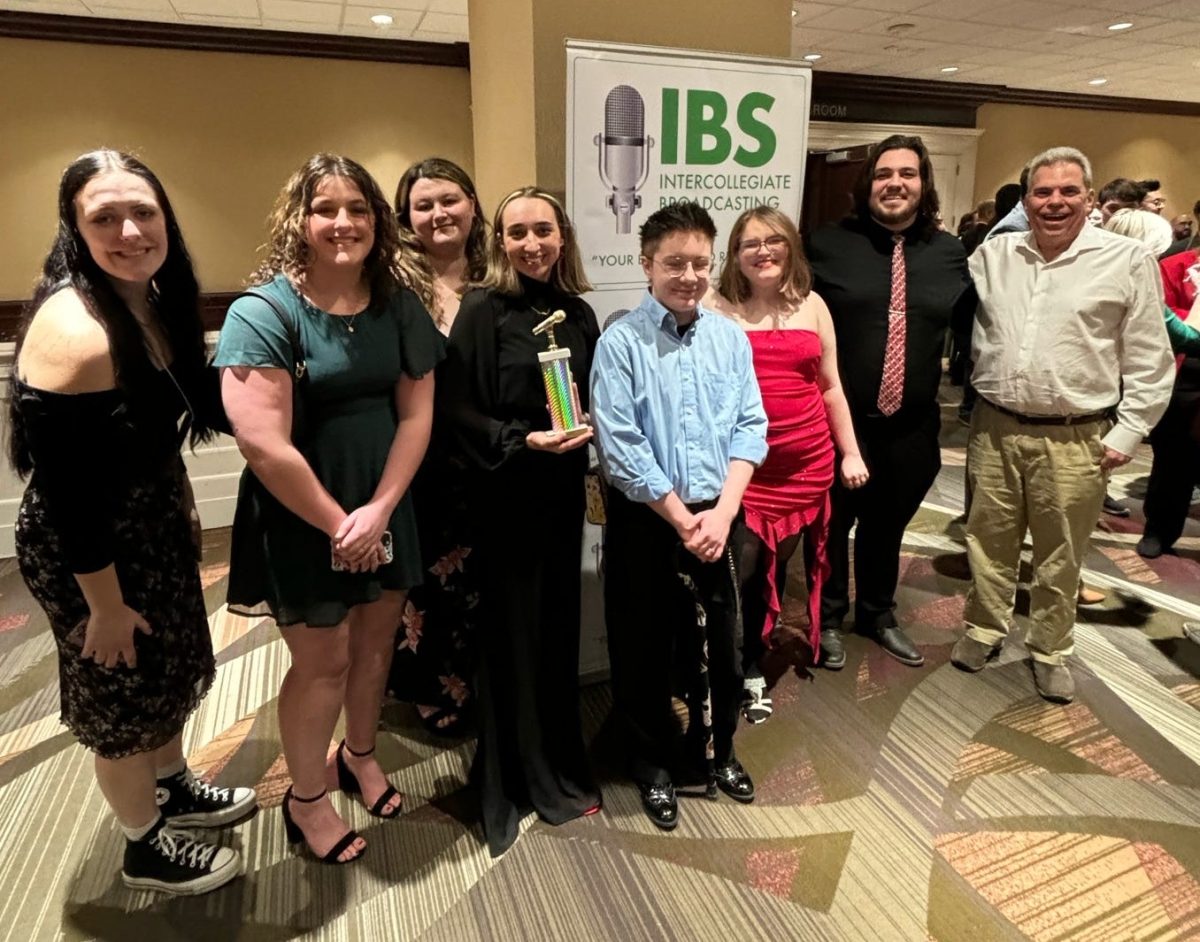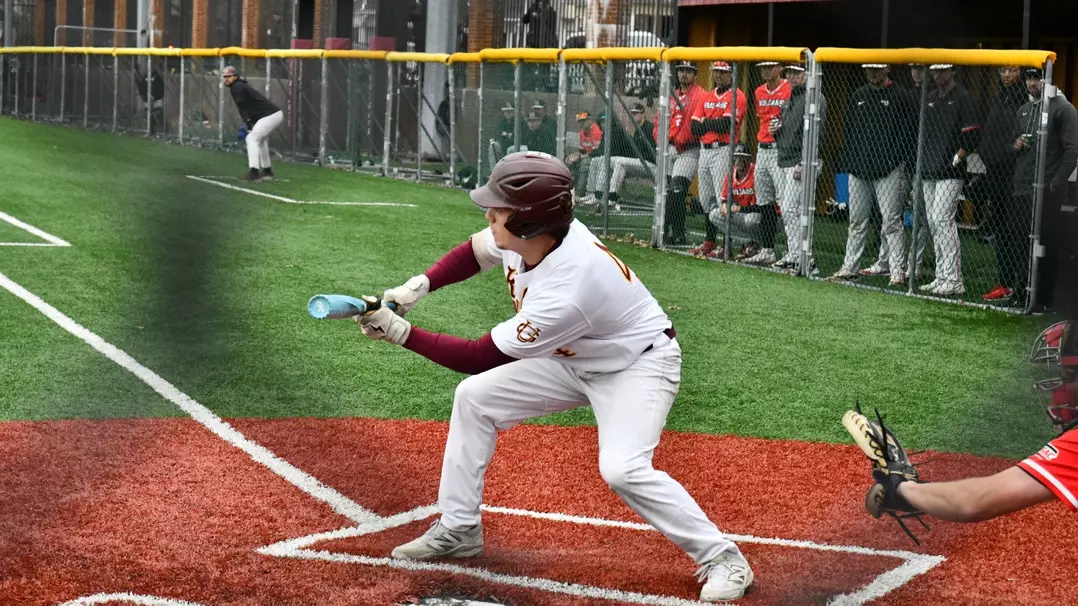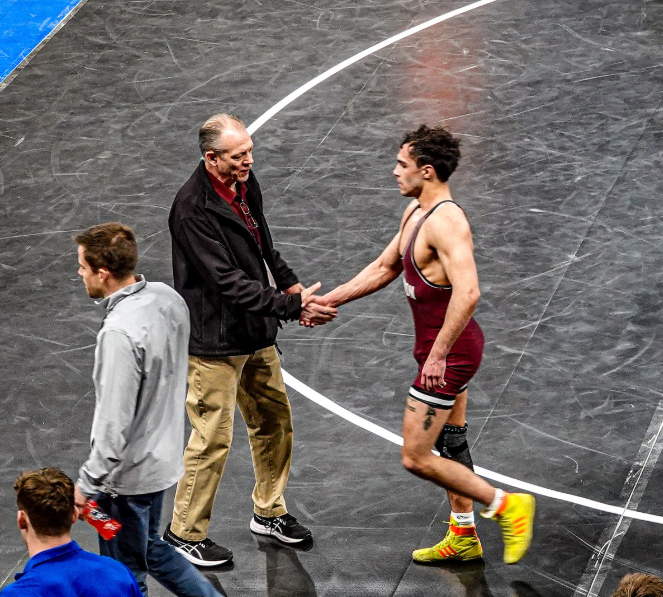For millions of fans across the nation, collegiate athletics provide a source of entertainment and devotion. The overarching expectation of winning is certainly not lost on student-athletes, who face an extreme amount of pressure to uphold both ends of their dual role.
Injured athletes, however, soon discover that the struggle to get back into prime playing condition is equally as demanding.
Three athletes at Gannon University are well acquainted with these struggles, and all three have either recently completed or are in the middle of their senior seasons as Golden Knights.
Jerry Smith, Becky Innes and Steve Piotrowicz have all gone through, or are currently dealing with, injuries that have caused them to miss significant portions of their respective seasons: football, women’s basketball and men’s basketball.
Gannon’s head athletic trainer, Todd Matlak, said he has worked with these athletes from the first moments of their injuries all the way through rehabilitation and has helped each of them cope with the stress that comes along with being sidelined.
“The pressure really affects them mentally, which makes our job that much more difficult,” he said. “We try to get them back out there as quickly and obviously as safely as possible, but sometimes that’s not fast enough for the coaches, or sometimes mom and dad want them to stay out longer.”
Smith, a 6-foot-4-inch wide receiver, recently completed his senior season on the football team, but his career was not without its obstacles. He was a victim of a torn medial collateral ligament – or MCL – in his left knee in October 2010. The injury, which he said occurred during a collision in a game, sidelined him until spring practice began in early 2011. Matlak, who said he played an integral role in Smith’s rehab process, said the injury probably occurred because of the nature of the hit.
“With an MCL injury, you’re getting hit from the side with your leg planted, and everything just kind of caves in,” Matlak said. “The MCL either tears or gets stretched more than it should.”
Matlak said that surgery is not typically needed for an MCL tear, as the ligament should scar over and heal on its own. Smith’s case was no different; he did not need surgery, but was forced to miss the final three games of the 2010 season, as he couldn’t put weight on his left leg. He said that though he was grateful it didn’t occur during his senior year, it was still difficult.
“It feels weird to know that you were just out there last week but now you have to stand on the sideline and watch,” he said.
This struggle is something Innes, a forward on the women’s basketball team, said she is also familiar with. A broken foot sidelined her from early October of 2011 until the team’s recent win over Slippery Rock University on Jan. 25, where she stepped foot on the court for the first time this season to resounding cheers from the crowd and her teammates.
“Since I’m a senior, it was hard not being there for my team,” she said. “I had to sit and watch practice every day and watch games, and I just kept thinking I should be out there helping my teammates.”
Innes first fractured her right foot playing basketball in July. Her recent injury occurred the day before the team departed for its tournament in Canada on Oct. 13, 2011, when she came down on
someone’s foot at practice and broke through the initial fracture. Innes is no stranger to this injury, as she broke her other foot when she was a freshman.
Innes has now been fitted with with a plate and four screws in her foot. This hardware is a result of the surgery she had just two weeks after being injured, and thanks to which she spent several weeks on crutches.
Smith and Innes were both unable to put any weight on their injured appendages for several weeks and both said that being on crutches was one of the hardest parts of the healing process.
“No one likes to be on crutches,” Smith said. Innes concurred.
“People take walking for granted,” she said.
While the nature of Smith’s and Innes’s injuries made it impossible for them to continue to play until the issues were resolved, Piotrowicz continued playing through a torn hip labrum – the cartilage between the hip bone and the head of the femur – that he said was painful but tolerable.
A guard for the men’s basketball team, Piotrowicz said although he will eventually need surgery, he planned to continue to play through the rest of his senior season. That was until a career-ending concussion, his sixth, forced him to put basketball on the back burner and focus on his recovery.
Piotrowicz said he suffered the injury when he went to pass a ball and his head contacted another teammate’s chest. When he hit the floor, he lost all feeling in his body from his neck down but was immediately aware of the seriousness of the situation.
“I knew right away,” he said. “My arms and legs clenched up on me, the paramedics had to come with a stretcher, the whole nine yards. It was scary for a lot of people at that practice.”
For Piotrowicz, who said basketball has always been a part of his life, the change will be difficult.
“It really hasn’t hit me yet,” he said. “Senior night is coming up; I’m sure that’ll be hard. Basketball is the only thing I knew growing up, it’s all I did, all I worked for. When it’s taken away from you like that, under those circumstances, it’s not a good feeling.”
Piotrowicz will be sorely missed by the Knights, as he was a team leader in both 3-point field goal percentage and assists, and was second in both 3-pointers and steals.
Although he is currently limited in his daily activities and is only allowed to attend class, he said he is looking forward to being able to rejoin his team at practices so that he can help coach.
“Right now it’s more of getting myself healthy and getting to a good mindset of where I need to be personally and then I can come out and help the team,” he said.
Piotrowicz, who is 5-foot-10-inches, said he believes his size and style of play have been factors in his proneness to head injuries, which Matlak also acknowledged.
“Steve has definitely had his fair share of concussions, no doubt about it,” Matlak said. “That’s the way he plays, though. He plays hard. When you play hard like that, you’re going to be more prone to getting into that type of situation.”
Matlak, who is in his sixth year as Gannon’s head athletic trainer, said that head injuries are often extremely difficult to diagnose, even with the neurological tests he runs on someone who might have been concussed.
“With a head injury, a lot of times you just have to take their word for it. I wish I could go in there and tape their brain or something like that but I can’t.”
While Matlak said the diagnosis of and recuperation from concussions vary greatly across the board, he takes a similar approach with nearly all athletes who suffer bodily injuries, such as Smith and Innes.
He said the crucial first stage is reducing the swelling around the area and then beginning to reclaim range of motion. Once the athlete has regained a full, pain-free range of motion, he or she can start doing strengthening exercises to get the injured appendage at the same level as the unaffected.
Matlak said he believes the hardest part of the recovery process, for the athlete, is the beginning.
“They go through stages psychologically, and it’s that denial at first, especially with a significant injury, that’s the toughest thing for us to get them over.” he said. “The denial stage is what makes them say ‘I’ll be good to go, just give me a couple minutes or a couple days.’”
He said that in many cases, athletes try to hide injuries or rush the recovery process. Because of this, Matlak said he tries to keep rehab interesting.
“We have to keep it fresh for them,” he said. “When they’re doing the same thing over and over each day they get bored with it.”
When athletes get clearance from a surgeon or doctor, Matlak said they often try to do too much.
“Just because they feel good doesn’t mean everything’s ready to go,” he said. “You still have to let the body recuperate, you have to take a day off here and there.”
Smith said that the first months after coming back to practice were difficult because he expected to be able to jump right back in, but found that he was still wary of reinjuring his knee.
“A knee injury is just one of those things that makes you real hesitant about running and everything and being hit again,” he said. “It was all mental.”
Matlak said other injuries are more complicated. Athletes, like Piotrowicz, who suffer serious concussions often don’t have a chance to continue playing. Piotrowicz said that although his situation is difficult, he is trying to remain positive.
“I feel like everything happens for a reason,” he said. “I just have to deal with it and hopefully good things will come in the future.”












